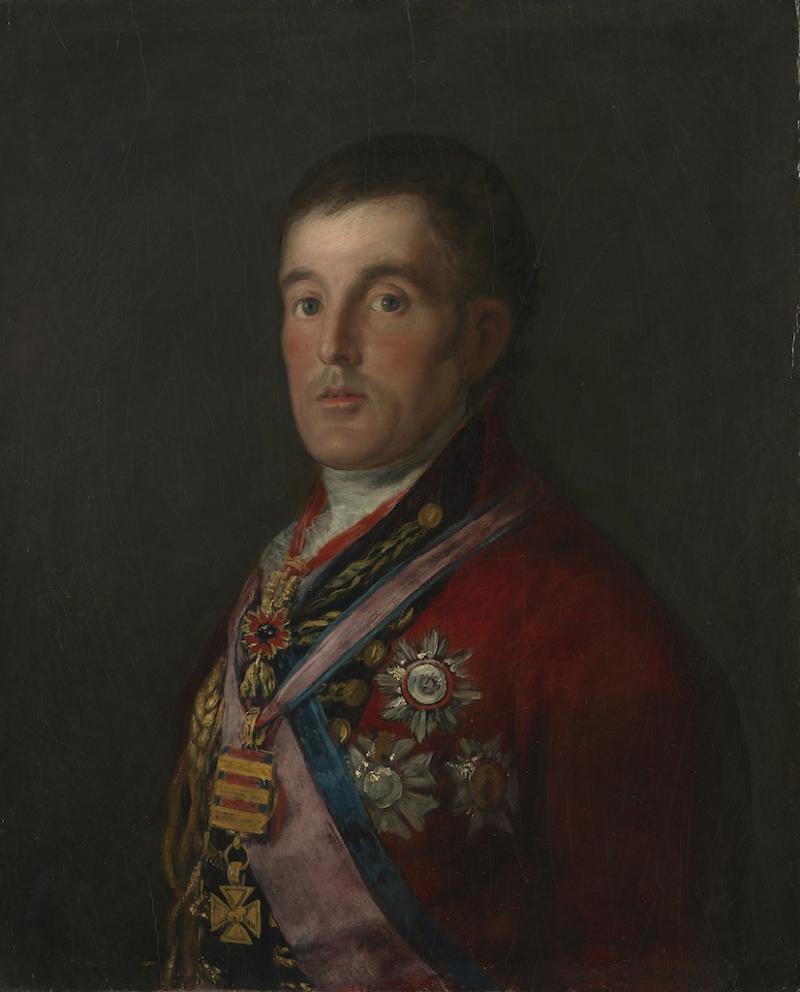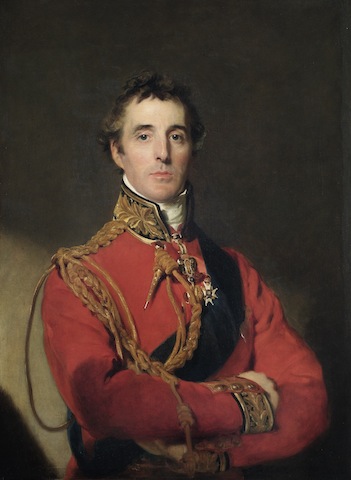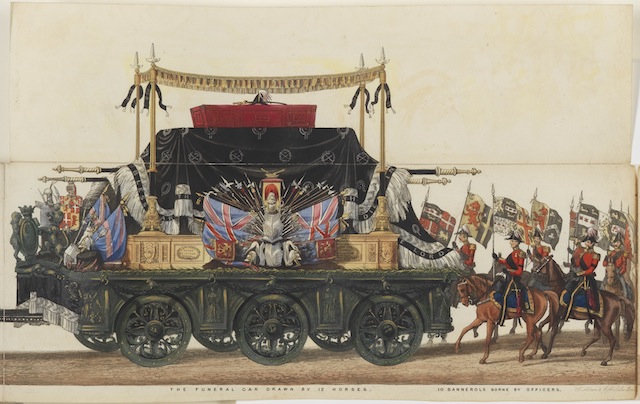Wellington: Triumphs, Politics and Passions, National Portrait Gallery | reviews, news & interviews
Wellington: Triumphs, Politics and Passions, National Portrait Gallery
Wellington: Triumphs, Politics and Passions, National Portrait Gallery
A masterly portrait of the Iron Duke that draws out a contradictory personality

One masterpiece and two superb portraits both dominate and sum up in vivid fashion the complex personality, long life and astonishing trajectory of the first Duke of Wellington
There were something like 200 portraits done in his lifetime. The haunting Goya portrait of 1812-1814 (main picture), altered several times to allow for more decorations on his uniform, was painted in Madrid when the British occupied the Spanish capital at the end of the horrible five-year slog of the Peninsula War. As the general once said, “Nothing except a battle lost can be half so melancholy as a battle won” – and he had by this time plenty of experience of both.
Goya portrayed Wellington three times, in fact, and presumably knew him well. With his experience of over-decorated royals, he knew just how to capture Wellington’s medals, but compared to the sitter’s face, haunted and marked by experience, the decorations are negligible. Wellington is in his mid-40s, and his gaze is an irresistibly compelling amalgam of confidence and directness, and a kind of poignant vulnerability. It is a marvel.
There are also outstanding images by Sir Thomas Lawrence, still perhaps one of Britain’s most seriously underrated artists. One, from 1821, shows Wellington in civilian clothes – though wearing the Order of the Golden Fleece. He is dignified, inscrutable, perhaps also immovable. Another is an unfinished study, painted when the Duke was 60, the bony prominent nose clearly delineated, the face even more pared down. The first was commissioned by very close friends, the Arbuthnots, the latter by the political hostess Lady Jersey. Everyone wanted him with them in one way or another. (Pictured below: Thomas Lawrence, Arthur Wellesley, Ist Duke of Wellington, 1817-18; Apsley House, London)
 Some of the women in his life are also shown, including his wife Kitty Pakenham. Their marriage was subject to public and private stresses and strains, and his numerous liaisons – with actresses, singers, society women – were public fodder. His friendships with women were also substantial, even legendary. Here is the intelligent Harriet Arbuthnot, the richest non-royal in England, in a 1817 portrait, also by Lawrence, her charm almost palpable; here too is Angela Burdett-Coutts, who proposed marriage to the Duke when she was in her 30s, and he in his 70s. He declined.
Some of the women in his life are also shown, including his wife Kitty Pakenham. Their marriage was subject to public and private stresses and strains, and his numerous liaisons – with actresses, singers, society women – were public fodder. His friendships with women were also substantial, even legendary. Here is the intelligent Harriet Arbuthnot, the richest non-royal in England, in a 1817 portrait, also by Lawrence, her charm almost palpable; here too is Angela Burdett-Coutts, who proposed marriage to the Duke when she was in her 30s, and he in his 70s. He declined.
It is the 200th-anniversary year of the allied victory at Waterloo, much of the site now just a bumpy, slightly hilly meadow near Brussels, curiously nondescript for such a horribly bloody war that changed the course of events so irrevocably. And yet, as Wellington described it, it was “the nearest run thing you ever saw in your life”. Thirty-thousand men or more, it is thought, were lost on the Allied side. And so the NPG has initiated the national commemoration obliquely, with one of its characteristically finely tuned concatenations of material objects to provide a visual biography of, in the poet laureate Tennyson’s emotive phrase, “the last great Englishman”.
He was a soldier more than attuned to the horror of war, hardened by campaigns in India and the long Peninsula War. As a young man his family did not quite know what to do with him. He was highly intelligent yet no academic. It was his time, when still a teenager, at the St Cyr military academy in France – ironically in view of the 25 years of Napoleonic wars to come – that was the making of him.
His was a contradictory personality, well brought out in this dazzling gem of a show. He was Anglo-Irish, and against all the odds saw through Catholic Emancipation, yet his veneration and approval for hierarchy, tradition, and monarchy made him implacably opposed to reform, let alone the great Reform Bill of 1832. He has been the only general to be Prime Minister, and he never managed to utilise the power of debate and discussion as opposed to clear-cut orders. He was the Iron Duke not because of Waterloo, but because of the iron shutters put up at Apsley House – also known as No 1, London – to protect his London home against the mob. Famed for his charismatic, powerful presence, the veneration accorded the Duke was overwhelming – as was the controversy over his high Tory political views. Even when retired he received so many requests for help and advice that he was an early pioneer of pre-printed responses in return, and we are shown one of these too.
 Wellington’s funeral in 1852 was the greatest ever accorded a non royal, here marked by a selection of the 67ft panorama created by Samuel Henry Gordon Alken and George Augustus Sala in 1853 (pictured above) – it takes eight minutes for the accompanying video to show it all. The whole will be unveiled in its entirely at the NPG on 18 June, which is the actual anniversary day of Waterloo. A million and half lined the streets for the funeral procession as it wound its way to St Pauls (where Alfred Gilbert’s huge memorial may be seen).
Wellington’s funeral in 1852 was the greatest ever accorded a non royal, here marked by a selection of the 67ft panorama created by Samuel Henry Gordon Alken and George Augustus Sala in 1853 (pictured above) – it takes eight minutes for the accompanying video to show it all. The whole will be unveiled in its entirely at the NPG on 18 June, which is the actual anniversary day of Waterloo. A million and half lined the streets for the funeral procession as it wound its way to St Pauls (where Alfred Gilbert’s huge memorial may be seen).
The variety of visual material, from caricature – the Duke in a Wellington boot as the head of the army – to Waterloo souvenirs and a daguerreotype, of the Duke himself when 75 – makes the display particularly intriguing. From Wellington, New Zealand, to Waterloo Station, the Duke and the war created a worldwide phenomenon. This captivating show imparts a mass of factual information in a wholly absorbing show-and-tell that the NPG has made its own.
Share this article
The future of Arts Journalism
You can stop theartsdesk.com closing!
We urgently need financing to survive. Our fundraising drive has thus far raised £49,000 but we need to reach £100,000 or we will be forced to close. Please contribute here: https://gofund.me/c3f6033d
And if you can forward this information to anyone who might assist, we’d be grateful.

Subscribe to theartsdesk.com
Thank you for continuing to read our work on theartsdesk.com. For unlimited access to every article in its entirety, including our archive of more than 15,000 pieces, we're asking for £5 per month or £40 per year. We feel it's a very good deal, and hope you do too.
To take a subscription now simply click here.
And if you're looking for that extra gift for a friend or family member, why not treat them to a theartsdesk.com gift subscription?
more Visual arts
 'We are bowled over!' Thank you for your messages of love and support
Much-appreciated words of commendation from readers and the cultural community
'We are bowled over!' Thank you for your messages of love and support
Much-appreciated words of commendation from readers and the cultural community
 Lee Miller, Tate Britain review - an extraordinary career that remains an enigma
Fashion photographer, artist or war reporter; will the real Lee Miller please step forward?
Lee Miller, Tate Britain review - an extraordinary career that remains an enigma
Fashion photographer, artist or war reporter; will the real Lee Miller please step forward?
 Kerry James Marshall: The Histories, Royal Academy review - a triumphant celebration of blackness
Room after room of glorious paintings
Kerry James Marshall: The Histories, Royal Academy review - a triumphant celebration of blackness
Room after room of glorious paintings
 Folkestone Triennial 2025 - landscape, seascape, art lovers' escape
Locally rooted festival brings home many but not all global concerns
Folkestone Triennial 2025 - landscape, seascape, art lovers' escape
Locally rooted festival brings home many but not all global concerns
 Sir Brian Clarke (1953-2025) - a personal tribute
Remembering an artist with a gift for the transcendent
Sir Brian Clarke (1953-2025) - a personal tribute
Remembering an artist with a gift for the transcendent
 Emily Kam Kngwarray, Tate Modern review - glimpses of another world
Pictures that are an affirmation of belonging
Emily Kam Kngwarray, Tate Modern review - glimpses of another world
Pictures that are an affirmation of belonging
 Kiefer / Van Gogh, Royal Academy review - a pairing of opposites
Small scale intensity meets large scale melodrama
Kiefer / Van Gogh, Royal Academy review - a pairing of opposites
Small scale intensity meets large scale melodrama
 Jenny Saville: The Anatomy of Painting, National Portrait Gallery review - a protégé losing her way
A brilliant painter in search of a worthwhile subject
Jenny Saville: The Anatomy of Painting, National Portrait Gallery review - a protégé losing her way
A brilliant painter in search of a worthwhile subject
 Abstract Erotic, Courtauld Gallery review - sculpture that is sensuous, funny and subversive
Testing the boundaries of good taste, and winning
Abstract Erotic, Courtauld Gallery review - sculpture that is sensuous, funny and subversive
Testing the boundaries of good taste, and winning
 Edward Burra, Tate Britain review - watercolour made mainstream
Social satire with a nasty bite
Edward Burra, Tate Britain review - watercolour made mainstream
Social satire with a nasty bite
 Ithell Colquhoun, Tate Britain review - revelations of a weird and wonderful world
Emanations from the unconscious
Ithell Colquhoun, Tate Britain review - revelations of a weird and wonderful world
Emanations from the unconscious
 Rachel Jones: Gated Canyons, Dulwich Picture Gallery review - teeth with a real bite
Mouths have never looked so good
Rachel Jones: Gated Canyons, Dulwich Picture Gallery review - teeth with a real bite
Mouths have never looked so good

Add comment